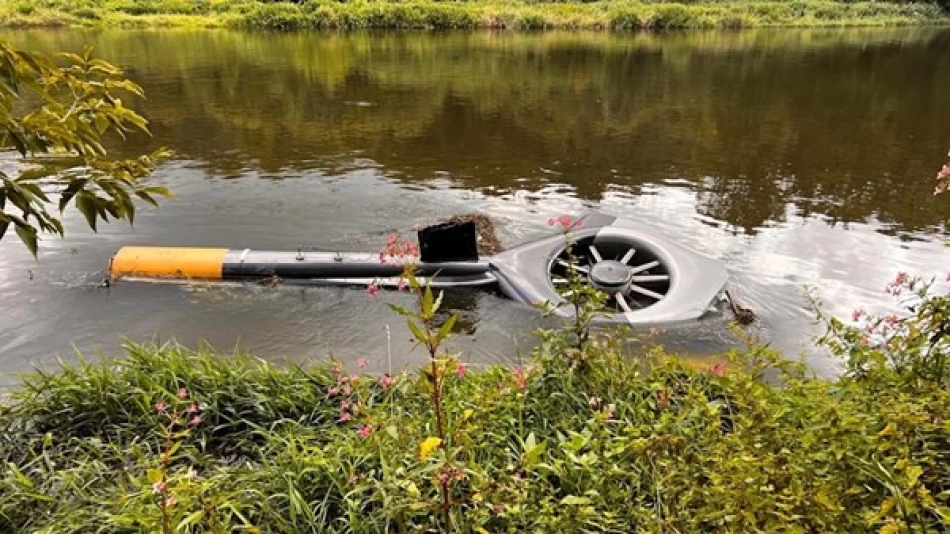
Germany Plane Crash: Shocking New Details Emerge as Aircraft Plunges into River
German Military Helicopter Crashes in Saxony River, Crew Status Unknown
A German military helicopter crashed into the Mulde River near the eastern city of Grimma on Tuesday morning, with aviation authorities losing contact with the aircraft around 10:30 AM. The incident highlights ongoing safety concerns surrounding military aviation operations as Germany continues to modernize its defense capabilities amid heightened European security tensions.
Discovery by Civilian Kayakers
The wreckage was discovered around noon by kayakers navigating the Mulde River, approximately 90 minutes after aviation control authorities lost contact with the aircraft. Leipzig district police confirmed the helicopter belonged to the German military, though they have not yet released details about the aircraft type or its mission parameters.
Fire department officials from the district reported no immediate confirmation of casualties, though search and rescue operations are likely ongoing. The gap between the disappearance and discovery suggests the crash occurred in a relatively remote section of the river system.
Broader Context of German Military Aviation
This incident occurs as Germany's Bundeswehr faces increased scrutiny over equipment readiness and safety protocols. The German military has been working to address chronic underfunding and maintenance issues that have plagued its aviation fleet for years, with parliamentary reports previously highlighting significant operational challenges across various aircraft types.
Regional Security Implications
Saxony's location in eastern Germany makes it strategically important for military operations, particularly as NATO allies increase training exercises and readiness postures following Russia's invasion of Ukraine. Any military aviation incident in this region draws attention to the operational tempo and potential strain on German defense assets.
Investigation and Safety Protocols
German aviation safety authorities will likely launch a comprehensive investigation into the crash, examining factors including weather conditions, mechanical failure, and human error. The Mulde River's relatively shallow depth in many areas may facilitate wreckage recovery, potentially providing investigators with substantial physical evidence.
The timing of the crash—during morning hours with presumably good visibility—suggests either sudden mechanical failure or unexpected weather conditions may have played a role. The fact that civilian recreational users were active on the river indicates conditions were suitable for outdoor activities.
 Layla Al Mansoori
Layla Al Mansoori







